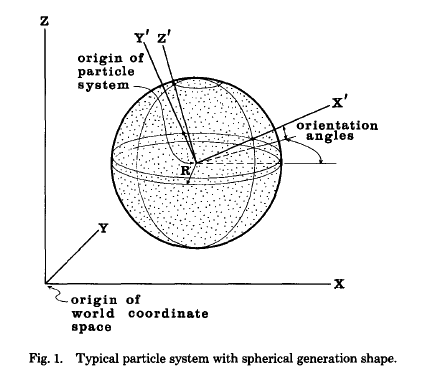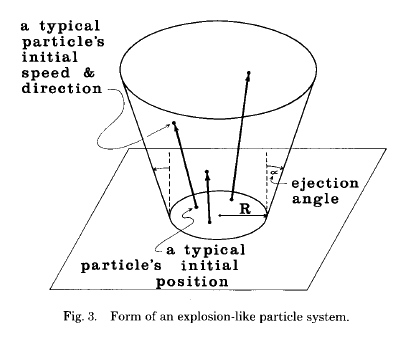Branislav Kisačanin & Vladimir Pavlović & Thomas S. Huang
Real-Time Vision for Human-Computer Interaction
(RTV4HCI)
Springer, 2005
(google book's
overview)
2004 IEEE CVPR Workshop on RTV4HCI - Papers
http://rtv4hci.rutgers.edu/04/
Computer vision and pattern recognition continue to play a dominant
role in the HCI realm. However, computer vision methods often fail to
become pervasive in the field due to the lack of real-time, robust
algorithms, and novel and convincing applications.
Keywords:
head and face modeling
map building
pervasive computing
real-time detection
Contents:
RTV4HCI: A Historical Overview.
- Real-Time Algorithms: From Signal
Processing to Computer Vision.
- Recognition of Isolated Fingerspelling
Gestures Using Depth Edges.
- Appearance-Based Real-Time Understanding
of Gestures Using Projected Euler Angles.
- Flocks of Features for
Tracking Articulated Objects.
- Static Hand Posture Recognition Based on
Okapi-Chamfer Matching.
- Visual Modeling of Dynamic Gestures Using 3D
Appearance and Motion Features.
- Head and Facial Animation Tracking
Using Appearance-Adaptive Models and Particle Filters.
- A Real-Time
Vision Interface Based on Gaze Detection -- EyeKeys.
- Map Building from
Human-Computer Interactions.
- Real-Time Inference of Complex Mental
States from Facial Expressions and Head Gestures.
- Epipolar Constrained
User Pushbutton Selection in Projected Interfaces.
- Vision-Based HCI
Applications.
- The Office of the Past.
- MPEG-4 Face and Body Animation
Coding Applied to HCI.
- Multimodal Human-Computer Interaction.
- Smart
Camera Systems Technology Roadmap.
- Index.
RTV4HCI: A Historical Overview
Matthew Turk (mturk@cs.ucsb.edu)
University of California, Santa Barbara
http://www.stanford.edu/~mturk/
http://www.cs.ucsb.edu/~mturk/
The goal of research in real-time vision for human-computer interaction
is to develop algorithms and systems that sense and perceive humans and
human activity, in order to enable more natural, powerful, and
effective computer interfaces.
Computers in the Human Interaction Loop (CHIL)
perceptual interfaces
multimodal interfaces
post-WIMP(windows, icons, menus, pointer) interfaces
implicit user awareness or explicit user control
The user interface
- the software and devices that implement a particular model (or set of models) of HCI
Computer vision technologies must ultimately deliver a better "user experience".
B Shneiderman,
Designing the User Interface: Strategies for Effective Human-Computer Interaction, Third Edition, Addison-Wesley, 1998.
: 1) time to learn 2) speed of performance 3) user error rates 4) retention over time 5) subjective satisfaction
- Presence and location (Face and body detection, head and body tracking)
- Identity (Face recognition, gait recognition)
- Expression (Facial feature tracking, expression modeling and analysis)
- Focus of attention (Head/face tracking, eye gaze tracking)
- Body posture and movement (Body modeling and tracking)
- Gesture (Gesture recognition, hand tracking)
- Activity (Analysis of body movement)
eg.
VIDEOPLACE (M W Krueger, Artificial Reality II, Addison-Wesley, 1991)
Magic Morphin Mirror / Mass Hallucinations (T Darrell et al., SIGGRAPH Visual Proc, 1997)
Principal Component Analysis (PCA)
Linear Discriminant Analysis (LDA)
Gabor Wavelet Networks (GWNs)
Active Appearance Models (AAMs)
Hidden Markov Models (HMMs)
Identix Inc.
Viisage Technology Inc.
Cognitec Systems
- MIT Medial Lab
ALIVE system (P Maes et al., The ALIVE system: wireless, full-body
interaction with autonomous agents, ACM Multimedia Systems, 1996)
PFinder system (C R Wren et al., Pfinder: Real-time tracking of the human body, IEEE Trans PAMI, pp 780-785, 1997)
KidsRoom project (A Bobick et al., The KidsRoom: A perceptually-based interactive and immersive story environment, PRESENCE: Teleoperators and Virtual Environments, pp 367-391, 1999)
Flocks of Features for
Tracking Articulated Objects
Mathias Kolsch (kolsch@nps.edu
Computer Science Department, Naval Postgraduate School, Monterey
Matthew Turk (mturk@cs.ucsb.edu)
Computer Science Department, University of California, Santa Barbara
Visual Modeling of Dynamic Gestures Using 3D
Appearance and Motion Features
Guangqi Ye (grant@cs.jhu.edu), Jason J. Corso, Gregory D. Hager
Computational Interaction and Robotics Laboratory
The Johns Hopkins University
Map Building from
Human-Computer Interactions
http://groups.csail.mit.edu/lbr/mars/pubs/pubs.html#publications
Artur M. Arsenio (arsenio@csail.mit.edu)
Computer Science and Artificial Intelligence Laboratory
Massachusetts Institute of Technology
Vision-Based HCI
Applications
Eric Petajan (eric@f2f-inc.com)
face2face animation, inc.
eric@f2f-inc.com
The Office of the Past
Jiwon Kim (jwkim@cs.washington.edu), Steven M. Seitz (seitz@cs.washington.edu)
University of Washington
Maneesh Agrawala (maneesh@microsoft.com)
Microsoft Research
Proceedings of the 2004 Conference on Computer Vision and Pattern Recognition Workshop (CVPRW'04) Volume 10 - Volume 10 Page: 157 Year of Publication: 2004
http://desktop.google.com
http://grail.cs.washington.edu/projects/office/
http://www.realvnc.com/
Smart
Camera Systems Technology Roadmap
Bruce Flinchbaugh (b-flinchbaugh@ti.com)
Texas Instruments

 swPark_2000rtim.pdf
swPark_2000rtim.pdf















